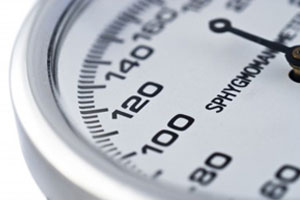 One thing we like to do at the SunTech blog is share debates and comparisons of automated vs. manual auscultatory blood pressure measurements. The latest comes from an article published in the Journal of the American Society of Hypertension earlier this year. This evaluation compared one particular automated oscillometric device with the results from the auscultatory method of listening for Korotkoff sounds during cuff deflation. The authors’ aim was to help readers better understand the fundamental differences between these two methods and illustrate how that might assist clinicians in effectively controlling and managing hypertensive patients.
One thing we like to do at the SunTech blog is share debates and comparisons of automated vs. manual auscultatory blood pressure measurements. The latest comes from an article published in the Journal of the American Society of Hypertension earlier this year. This evaluation compared one particular automated oscillometric device with the results from the auscultatory method of listening for Korotkoff sounds during cuff deflation. The authors’ aim was to help readers better understand the fundamental differences between these two methods and illustrate how that might assist clinicians in effectively controlling and managing hypertensive patients.
Understanding that there is a dramatic difference between these two methods is, in fact, an important consideration of which clinicians should be aware. The auscultatory method has been the standard method of determining BP for over 100 years and relies on the observer to detect the audible sounds (Korotkoff sounds) that occur during constricted blood flow. The oscillometric method, employed by most clinical-grade automated BP devices, analyzes pulse waves collected from the cuff during constricted blood flow. In this case, the cuff is the sensor. The auscultatory and oscillometric methods are two very different approaches to determining the same vital sign.
Each method also presents its own unique set of challenges. The manual auscultatory method is prone to poor technique, observer digit bias and poor hearing (often unbeknownst to the observer). The oscillometric method can be prone to errors when there is too much patient arm movement. In addition, each medical device manufacturer uses their own proprietary algorithm for acquiring blood pressure measurements so BP readings may vary significantly between devices which makes it important to shop around for a clinical grade device that is validated to industry standards such as the AAMI SP10 protocol.
Being aware of these differences and limitations can certainly be of help to clinicians when making hypertension treatment decisions. For further information on some of the challenges and best practices when taking an auscultatory blood pressure measurement, be sure to check out our e-book “10 Steps to Accurate Blood Pressure Measurement”. We also invite you to share your comments and experiences when comparing automated and manual BP measurements.